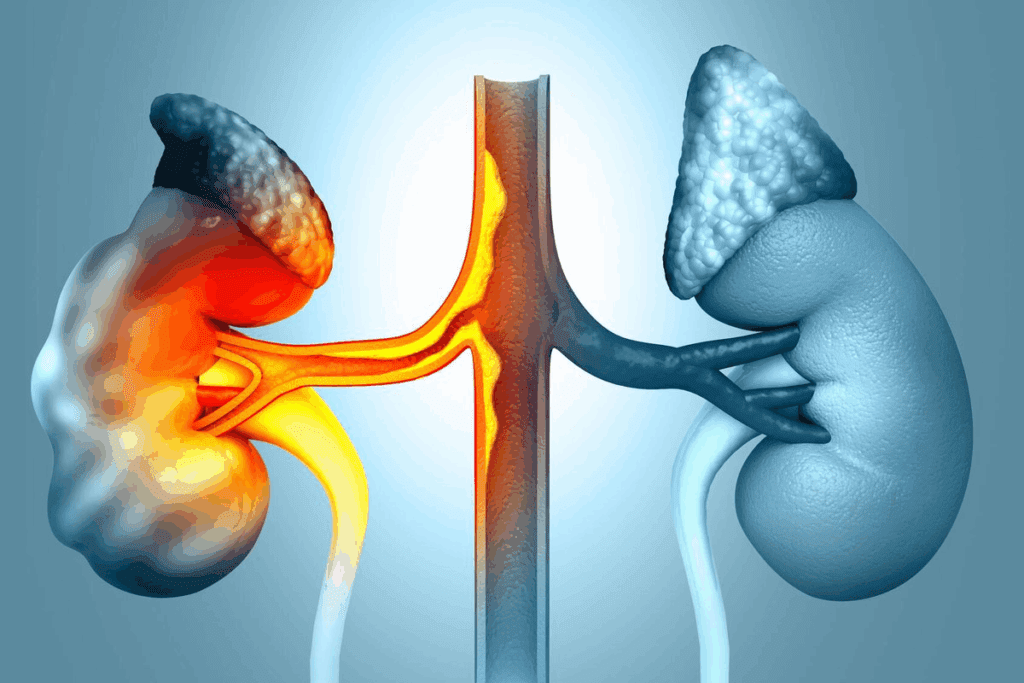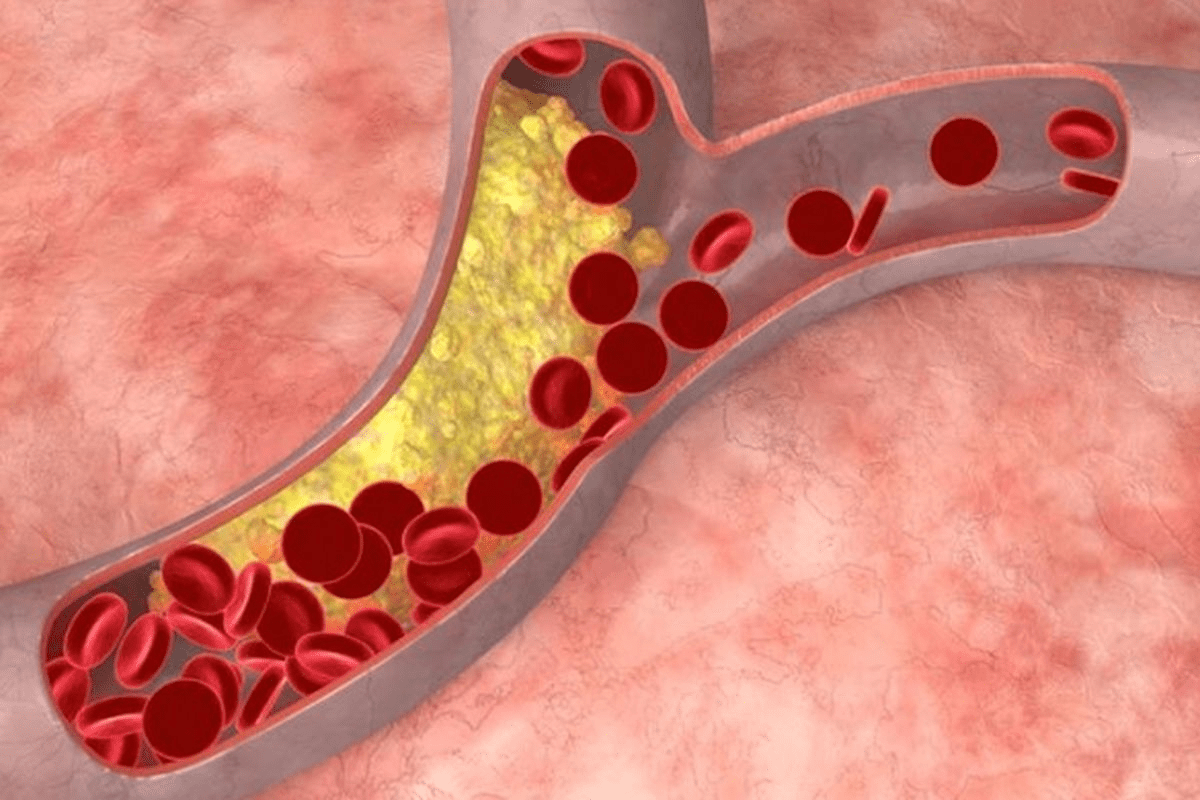Last Updated on November 26, 2025 by Bilal Hasdemir

Getting a kidney cancer diagnosis can feel scary. But, early detection means many effective treatment options are available. At Liv Hospital, we focus on you, using the newest medical techniques to fight renal cell carcinoma. Need stage 1 renal cancer treatment? Discover 7 top proven options, including powerful, minimally invasive surgeries, for every patient.
We know every patient’s story is different. Our team is here to help you every step of the way. For treatment of kidney cancer stage 1, we often remove the tumor surgically. We tailor our methods to meet your specific needs.
We aim to give you all the support and care you need. We want to make sure you’re informed and ready to make choices that are best for your health.
Key Takeaways
- Early detection improves treatment outcomes for kidney cancer.
- Surgical removal is a common treatment for renal cell carcinoma.
- Patient-centered care is key for effective renal mass treatment.
- Liv Hospital offers top-notch care for kidney cancer patients.
- There are many treatment options to fit each patient’s needs.
Understanding Stage 1 Renal Cancer: Diagnosis and Prognosis

Knowing how stage 1 renal cancer is diagnosed is key for patients. Early detection of renal cell carcinoma, the most common kidney cancer, means the tumor is often just in the kidney. This makes treatment more likely to be effective.
What Defines Stage 1 Renal Cancer
Stage 1 renal cancer has a tumor that is 7 centimeters or smaller and only in the kidney. This is important because it affects treatment and prognosis. The size and location of the tumor are key in determining the stage and treatment.
At this stage, the cancer usually doesn’t cause symptoms. It’s often found by chance during tests for other reasons. Finding it early is very important for successful treatment and survival.
Survival Rates and Prognosis
The survival rates for stage 1 renal cancer are good. With quick diagnosis and treatment, the survival rate is very high. The five-year survival rate is about 90% or more, depending on health and tumor details.
The prognosis for stage 1 renal cancer is usually good. This is compared to more advanced stages. The size, grade of the tumor, and overall health of the patient play a role. Regular check-ups are important to catch any signs of cancer coming back early.
The Importance of Early Detection in Renal Cancer Treatment

Early detection is key to managing renal cancer. It can change the treatment path significantly. When caught early, patients have more treatment options and a better chance of recovery.
Common Symptoms and Warning Signs
Renal cancer often shows up with small symptoms in the early stages. Look out for:
- Blood in the urine (hematuria)
- A lump or mass in the abdomen
- Persistent pain in the side or back
- Unexplained weight loss
- Fatigue
These signs can also mean other things. But, seeing a doctor is important if they don’t go away or get worse.
Diagnostic Procedures for Renal Cancer
Diagnosing renal cancer uses imaging tests and sometimes biopsy. Here are some common methods:
- Ultrasound: Uses sound waves to see the kidneys and find tumors.
- CT Scan: Gives detailed images of the kidneys to find and stage tumors.
- MRI: Shows detailed kidney images without X-rays, helping with tumor size and spread.
- Biopsy: Removes a small kidney tissue sample for microscope check.
These tools help doctors accurately diagnose renal cancer. They can also plan the best treatment based on the cancer’s stage.
Early detection is vital for effective treatment. Finding the disease early means more treatment options. This can lead to better results for patients.
Stage 1 Renal Cancer Treatment: A Complete Overview
When you’re diagnosed with stage 1 renal cancer, knowing your treatment options is key. This is just the start of a journey. You’ll look at different treatment plans, each with its own good and bad points.
Choosing the right treatment for stage 1 renal cancer is all about you. It depends on your health, the tumor’s details, and what you prefer. Treatments range from surgery to non-surgical methods like cryotherapy and radiation.
Treatment Decision Factors
Several important factors help decide your treatment. These include the tumor’s size and where it is, your kidney health, overall health, and what you want from treatment.
- Tumor size and location: Larger tumors or those in certain locations may require more aggressive treatment.
- Patient’s overall health: Patients with comorbidities may benefit from less invasive treatments.
- Kidney function: Preserving kidney function is a key consideration in treatment planning.
Multidisciplinary Approach to Treatment
Managing stage 1 renal cancer needs a team effort. Doctors like urologists, oncologists, and radiologists work together. They create a treatment plan that fits your needs.
| Specialist | Role in Treatment |
| Urologist | Surgical management of renal cancer, including partial and radical nephrectomy. |
| Oncologist | Non-surgical treatments, including systemic therapy and supportive care. |
| Radiologist | Diagnostic imaging and image-guided treatments like cryotherapy and stereotactic radiation. |
The table shows the team involved in treating stage 1 renal cancer. It shows how teamwork leads to better care for patients.
Healthcare providers use a team approach to tailor care to each patient. This ensures treatment meets the unique needs of those with stage 1 renal cancer.
Option 1: Partial Nephrectomy – The Gold Standard Treatment
Partial nephrectomy is the top choice for treating stage 1 renal cancer. It removes the tumor while keeping the kidney working. This method is popular because it gets rid of cancer cells and keeps the kidney healthy.
Procedure Overview and Success Rates
During partial nephrectomy, the surgeon takes out the cancerous part of the kidney and some healthy tissue around it. This surgery is very good at keeping the kidney working well. It lowers the chance of kidney disease later on.
Studies show that this surgery has high success rates. Often, more than 90% of patients are cancer-free five years after surgery.
The success of partial nephrectomy depends on the tumor’s size and location, and the patient’s health. The surgery can be done in two ways: open or minimally invasive. The minimally invasive method is better because it causes less pain and faster recovery.
Benefits of Kidney-Preserving Surgery
One big plus of partial nephrectomy is that it keeps the kidney working. By only removing the tumor and a bit of healthy tissue, the surgery helps avoid long-term kidney damage. This is great for people who might get kidney disease later.
Key benefits of partial nephrectomy include:
- Preservation of kidney function
- Reduced risk of chronic kidney disease
- Lower risk of cardiovascular events
- High cancer-specific survival rates
Recovery and Long-term Outcomes
Recovery from partial nephrectomy varies based on the patient’s health and the surgery type. Patients usually stay in the hospital for a few days. They might need a few weeks to fully get better.
Most patients have few long-term side effects. We closely watch our patients after surgery to make sure they recover well and have good long-term results. The table below shows some key recovery and long-term outcomes for patients who have partial nephrectomy.
| Aspect | Short-term Outcome | Long-term Outcome |
| Hospital Stay | 2-4 days | N/A |
| Full Recovery | 4-6 weeks | N/A |
| Kidney Function | Temporary decrease | Stable or improved |
| Cancer Recurrence | Low risk | Low risk with regular follow-up |
Choosing partial nephrectomy for stage 1 renal cancer offers a highly effective treatment. It keeps the kidney working and has good long-term results.
Option 2: Radical Nephrectomy – When Complete Kidney Removal is Necessary
When a tumor is big or hard to reach, radical nephrectomy might be the best choice for stage 1 renal cancer. This surgery removes the whole kidney, adrenal gland, and nearby tissue.
Indications for Radical vs. Partial Nephrectomy
Radical nephrectomy is chosen when tumors are too big or in tricky spots. The choice between radical and partial nephrectomy depends on the tumor’s size, location, and the patient’s health.
Key indications for radical nephrectomy include:
- Large tumors that are not amenable to partial nephrectomy
- Tumors located in a position that makes partial nephrectomy technically difficult
- Patients with certain anatomical or physiological conditions that make radical nephrectomy more suitable
Surgical Approaches and Techniques
Radical nephrectomy can be done in different ways, like open surgery or minimally invasive methods like laparoscopic or robotic-assisted surgery. The choice depends on the patient’s health, the surgeon’s skills, and the tumor’s details.
Minimally invasive techniques are often chosen when possible. They usually mean less pain, shorter hospital stays, and faster recovery times than open surgery.
Living with One Kidney: What Patients Should Know
After radical nephrectomy, patients have only one working kidney. Usually, one kidney is enough for normal life. But, they need to know how to keep their kidney healthy.
Important considerations for living with one kidney include:
- Staying hydrated and eating a healthy diet
- Avoiding harmful substances and certain medicines for the kidney
- Regular check-ups with a healthcare provider to watch kidney function
Understanding radical nephrectomy’s reasons, surgery methods, and care after surgery helps patients make good choices for stage 1 renal cancer treatment.
Option 3: Minimally Invasive Surgical Approaches
Minimally invasive surgery has changed how Stage 1 renal cancer is treated. It offers many benefits over traditional surgery. These new methods mean less pain, shorter hospital stays, and faster recovery times for patients.
Laparoscopic Surgery for Renal Cancer
Laparoscopic surgery, or keyhole surgery, uses small incisions. It lets surgeons remove tumors or kidneys with a camera and tools. This method is less painful and leads to quicker recovery than open surgery.
The benefits of laparoscopic surgery include:
- Smaller incisions, resulting in less scarring
- Reduced postoperative pain
- Shorter hospital stays
- Quicker return to normal activities
Robotic-Assisted Surgery Benefits
Robotic-assisted surgery is a cutting-edge minimally invasive method. It uses a robotic system to improve the surgeon’s skills. This technology offers clear 3D views, precise tools, and better ergonomics for the surgeon.
The advantages of robotic-assisted surgery include:
- Enhanced precision and dexterity
- Improved visualization of the surgical site
- Reduced risk of complications
- Faster recovery times
Comparing Open vs. Minimally Invasive Techniques
Open surgery and minimally invasive surgery have key differences. Open surgery uses a big incision to reach the kidney. Minimally invasive surgery uses small incisions and special tools.
| Criteria | Open Surgery | Minimally Invasive Surgery |
| Incision Size | Large incision | Small incisions |
| Recovery Time | Longer recovery | Quicker recovery |
| Postoperative Pain | More pain | Less pain |
The choice between open and minimally invasive surgery depends on several factors. These include the patient’s health, the tumor’s size and location, and the surgeon’s skills.
Option 4: Cryotherapy for Non-Surgical Candidates
Cryotherapy is becoming a known treatment for stage 1 renal cancer for those who can’t have surgery. This method freezes cancer cells to kill them. It’s a good choice for people who can’t have surgery because of health issues.
Cryoablation Mechanism Against Cancer Cells
Cryoablation uses a thin probe to freeze cancer cells. The probe gets very cold, around -40°C. This cold kills the cells and starts an immune response against the tumor.
Over time, the body gets rid of the dead cells. This makes the tumor smaller.
Key steps in the cryoablation process include:
- Insertion of the cryoprobe into the tumor
- Freezing of the tumor cells
- Immune response against the frozen tumor
- Gradual absorption of the dead cells by the body
Ideal Candidates for Cryotherapy
Cryotherapy is great for those who can’t have surgery. This includes older patients, those with many health problems, or those who have had kidney surgery before. It’s also good for small tumors or those with only one kidney.
The choice to have cryotherapy depends on the patient’s health, the tumor, and what they prefer.
Efficacy and Recurrence Rates
Research shows cryoablation works well for small tumors. But, how well it works can depend on the tumor size, location, and the patient’s health.
| Tumor Size | Success Rate | Recurrence Rate |
| 95% | 5% | |
| 3-4 cm | 85% | 10% |
| >4 cm | 70% | 20% |
It’s important to keep up with follow-ups to watch for any signs of the cancer coming back. Cryotherapy is a good option for those who can’t have surgery. It balances being effective with being easy to handle.
Option 5: Radiofrequency Ablation as an Alternative Treatment
For those with Stage 1 renal cancer, radiofrequency ablation is a good option. It uses heat from electrical currents to kill cancer cells.
Procedure Details and Patient Experience
This treatment is done under local anesthesia and sedation. A probe is inserted into the tumor under imaging. Electrical currents then create heat to kill the cancer cells.
The patient’s experience during recovery can vary. Most can go home the same day or the next. Some may feel sore or uncomfortable, but pain meds help.
Comparing Ablation Techniques
There are several ablation methods for renal cancer, like radiofrequency and cryoablation. The choice depends on the tumor’s size, location, and the patient’s health.
| Technique | Methodology | Benefits | Potential Drawbacks |
| Radiofrequency Ablation | Uses heat from high-frequency currents | Minimally invasive, preserves kidney function | Risk of thermal damage to surrounding tissues |
| Cryoablation | Uses extreme cold to destroy cancer cells | Effective for certain tumor types, less risk of thermal damage | Risk of damage to surrounding tissues, possible incomplete tumor destruction |
Long-term Outcomes and Follow-up Care
Studies show radiofrequency ablation works well for Stage 1 renal cancer. Long-term outcomes are good, with controlled tumor growth and kidney function. Regular imaging is key for follow-up care to watch for recurrence or metastasis.
Option 6: Stereotactic Radiation for Localized Renal Tumors
Stereotactic radiation is becoming more popular for treating localized renal tumors. It’s precise and doesn’t require a big incision. This method is great for patients who can’t have surgery.
SBRT Technology and Application
SBRT uses advanced tech to hit tumors with high accuracy. It keeps healthy tissue safe. This is thanks to advanced imaging and radiation systems.
Key Components of SBRT:
- Advanced imaging techniques for precise tumor localization
- High-dose radiation delivery
- Real-time tracking of tumor movement
Treatment Schedule and Side Effects
SBRT treatments are short, lasting from 3 to 5 sessions. This is faster than traditional radiation therapy. It’s a big plus for patients.
Side effects are usually mild. You might feel tired, nauseous, or have pain in the treated area. But serious side effects are rare.
| Treatment Aspect | Description |
| Treatment Schedule | 3 to 5 fractions |
| Common Side Effects | Fatigue, nausea, localized pain |
| Serious Side Effects | Rare, but can include radiation-induced damage to surrounding organs |
Effectiveness in Stage 1 Renal Cancer
SBRT is effective for stage 1 renal cancer. Studies show it has high success rates. It’s also non-invasive, which is a big plus for patients.
Benefits of SBRT for Stage 1 Renal Cancer:
- High local control rates
- Non-invasive
- Short treatment course
Option 7: Active Surveillance for Select Patients
For those with stage 1 renal cancer, active surveillance is a good choice. It means watching the patient closely. This way, treatment is only started if the tumor changes a lot.
Criteria for Active Surveillance Candidacy
Not everyone can choose active surveillance. Key criteria include a tumor size under 3 cm and low risk of growth. Also, older patients or those with health issues might choose this option to avoid big treatments.
Monitoring Protocols and Frequency
Those on active surveillance get regular checks. This includes periodic imaging studies like CT scans or ultrasounds, and sometimes biopsies. These checks happen every 6 to 12 months. This helps us spot any tumor changes that might mean it’s time for treatment.
When to Transition from Surveillance to Active Treatment
Deciding to move from surveillance to treatment depends on tumor changes. Indicators for transitioning include big size increases, changes in shape, or symptoms. If these happen, we look at the patient’s health again and talk about the best treatment.
Choosing active surveillance needs careful patient selection and regular checks. It helps avoid unnecessary treatments for some. At the same time, it makes sure those needing more treatment get it on time.
Advanced Treatments: What to Know About Later Stage Options
It’s important for patients to understand the treatment options for later stages of renal cancer. As the disease gets worse, treatments often change. They focus more on easing symptoms and slowing the disease’s growth.
Kidney Cancer Treatment Stage 2 Approaches
For stage 2 renal cancer, treatments might include surgery and adjuvant therapies. Surgery is the main treatment for early kidney cancer. It aims to remove the tumor and keep the kidney working.
- Surgical removal of the kidney (radical nephrectomy)
- Potential use of adjuvant therapies in clinical trials
- Close surveillance for recurrence
Stage 3 and 4 Renal Cancer Therapies
Stage 3 and 4 renal cancer need more complex treatments. Targeted therapies and immunotherapies are key in treating advanced kidney cancer.
Some main treatments for stage 3 and 4 include:
- Targeted therapies, such as tyrosine kinase inhibitors
- Immunotherapies, including checkpoint inhibitors
- Combination regimens to enhance treatment efficacy
Every patient is different, and treatments are made to fit each person’s needs and cancer type.
Conclusion: Making an Informed Decision About Your Treatment Journey
Stage 1 renal cancer treatment options are varied. They include surgeries like partial and radical nephrectomy, and less invasive methods. Each person’s treatment path is different, making it key to understand the options.
Early detection is vital, and a team of doctors helps plan treatments. Many factors, like the cancer’s size and location, also play a role. This information helps patients choose the best treatment for them.
Choosing the right treatment for stage 1 renal cancer means looking at the pros and cons of each option. We suggest talking openly with doctors. This way, patients can understand their diagnosis, outlook, and the best treatment plans.
By talking openly with healthcare providers, patients can feel more confident in their treatment choices. They gain the knowledge needed to support their health and well-being.
FAQ
What is the standard treatment for stage 1 renal cancer?
The main treatment for stage 1 renal cancer is partial nephrectomy. This surgery removes the tumor but keeps the rest of the kidney.
What are the benefits of partial nephrectomy?
Partial nephrectomy has many benefits. It helps keep the kidney working well. It also lowers the risk of chronic kidney disease and keeps overall health good.
When is radical nephrectomy recommended for stage 1 renal cancer?
Radical nephrectomy is chosen when the tumor is big or hard to reach for partial nephrectomy. It means removing the whole kidney.
What are the advantages of minimally invasive surgical approaches for renal cancer?
Minimally invasive surgeries, like laparoscopic and robotic-assisted, have big benefits. They use smaller cuts, cause less pain, and help patients recover faster than open surgery.
What is cryotherapy, and who is it suitable for?
Cryotherapy, or cryoablation, freezes cancer cells. It’s good for stage 1 renal cancer patients who can’t have surgery because of health issues.
How does radiofrequency ablation work as a treatment for stage 1 renal cancer?
Radiofrequency ablation uses electrical currents to heat up and kill cancer cells. It’s an option for those who can’t have surgery.
What is stereotactic body radiation therapy (SBRT) for renal cancer?
SBRT is a precise radiation therapy. It gives high doses of radiation to tumors. It’s a non-invasive option with few side effects.
What is active surveillance, and who is eligible for it?
Active surveillance means closely watching patients with stage 1 renal cancer. It’s for those with small tumors and health concerns.
How does the stage of renal cancer affect treatment options?
The stage of renal cancer greatly affects treatment choices. Early stages often get surgery or localized therapies. Later stages might need more aggressive treatments, like systemic therapies.
What are the treatment options for stage 2, 3, and 4 renal cancer?
For later stages, treatments might include surgery, targeted therapy, immunotherapy, and other systemic treatments. This depends on the disease’s extent and the patient’s health.
How is the treatment plan determined for renal cancer patients?
A team of healthcare professionals decides the treatment plan. They consider the cancer’s stage and grade, the patient’s health, and their preferences.
What is the role of a multidisciplinary team in renal cancer treatment?
A team of urologists, oncologists, radiologists, and others work together. They provide complete care, ensuring the best treatment for each patient’s needs.






